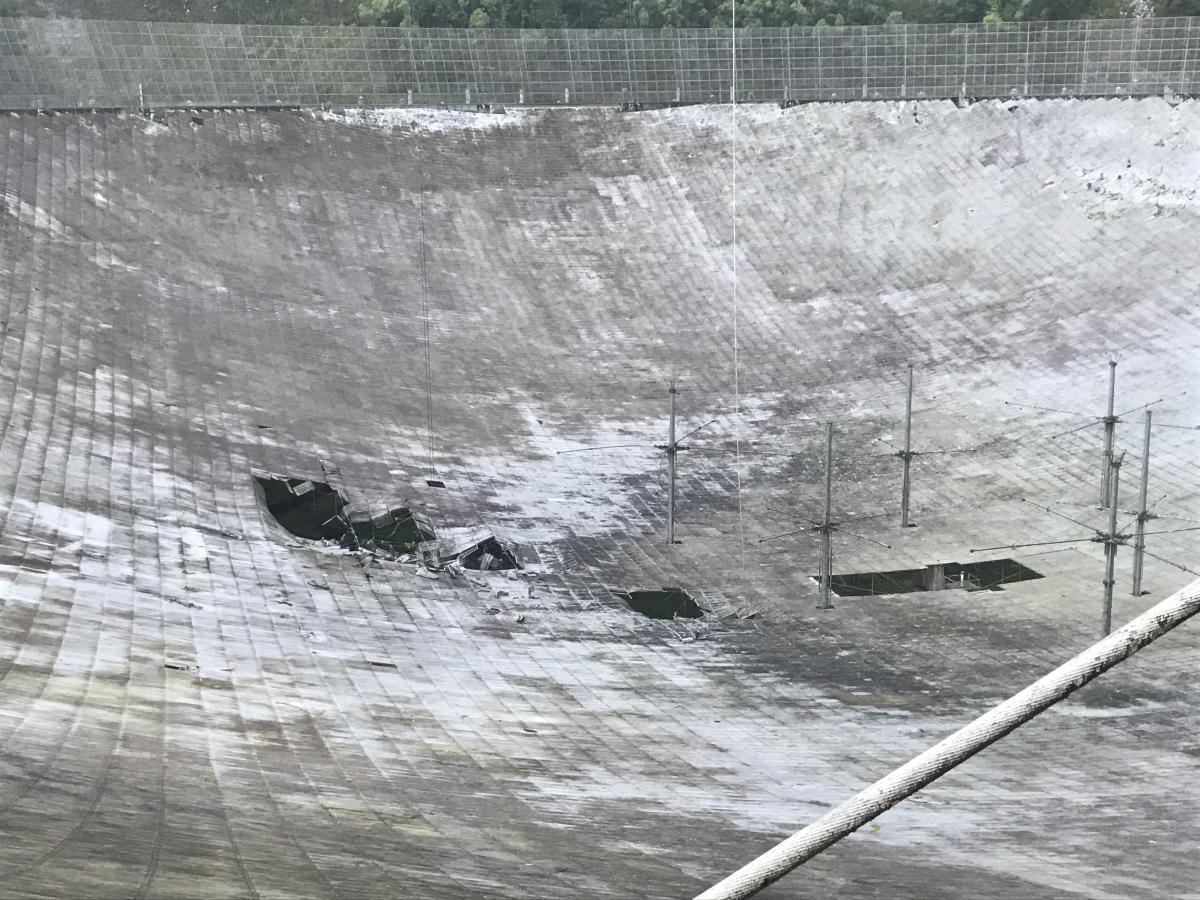
View of Damage to Arecibo Dish from above. Image: Phil Perillat
Arecibo has been the most sensitive radio telescope in the world for most of the last half century, and a continuing series of upgrades have kept it at the cutting-edge in multiple science areas.
The NANOGrav project is particularly susceptible to a cessation of observations. NANOGrav is a decades-long US/Canadian experiment to directly detect and study nanohertz-frequency gravitational waves using precision timing of millisecond pulsars. Continuous monitoring of these pulsars is a crucial part of the experiment, and provides a wide range of synergistic science in the process. Arecibo observes half of the over 80 millisecond pulsars that NANOGrav currently times, and it provides about half of our overall sensitivity to gravitational waves. Many of these pulsars can be timed only with Arecibo thanks to its incredible sensitivity. NANOGrav’s most recent analyses show that a detection of gravitational waves is likely imminent. Any gap longer than several months in our 16 years of data will impede our ability to characterize the low-frequency gravitational-wave universe and carry out the associated multi-messenger science. It will also likely add systematics to our datasets that will make them more difficult to model. If Arecibo wasn’t repaired, its loss would be a disaster for both US gravitational-wave and radio astronomy.
Besides NANOGrav, many other scientific projects and programs depend on the unique capabilities of Arecibo, including its exquisite sensitivity to radio transients and neutral hydrogen, and transmitting capabilities crucial for near-Earth object tracking. We encourage the NSF, NASA, and the University of Central Florida to invest the financial and personnel resources necessary to return Arecibo to its full scientific capacity.